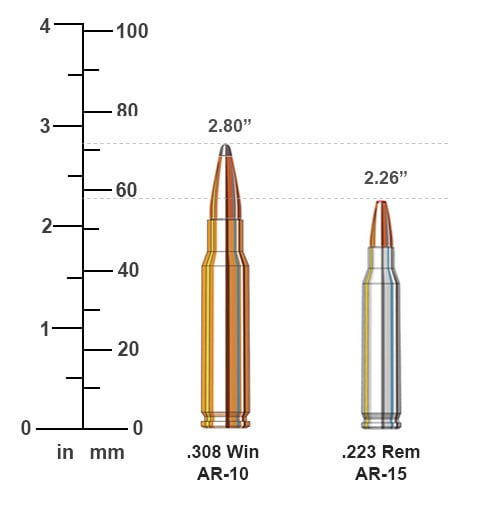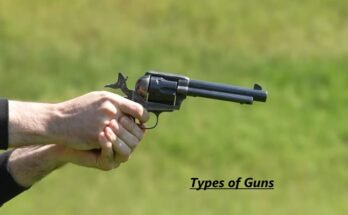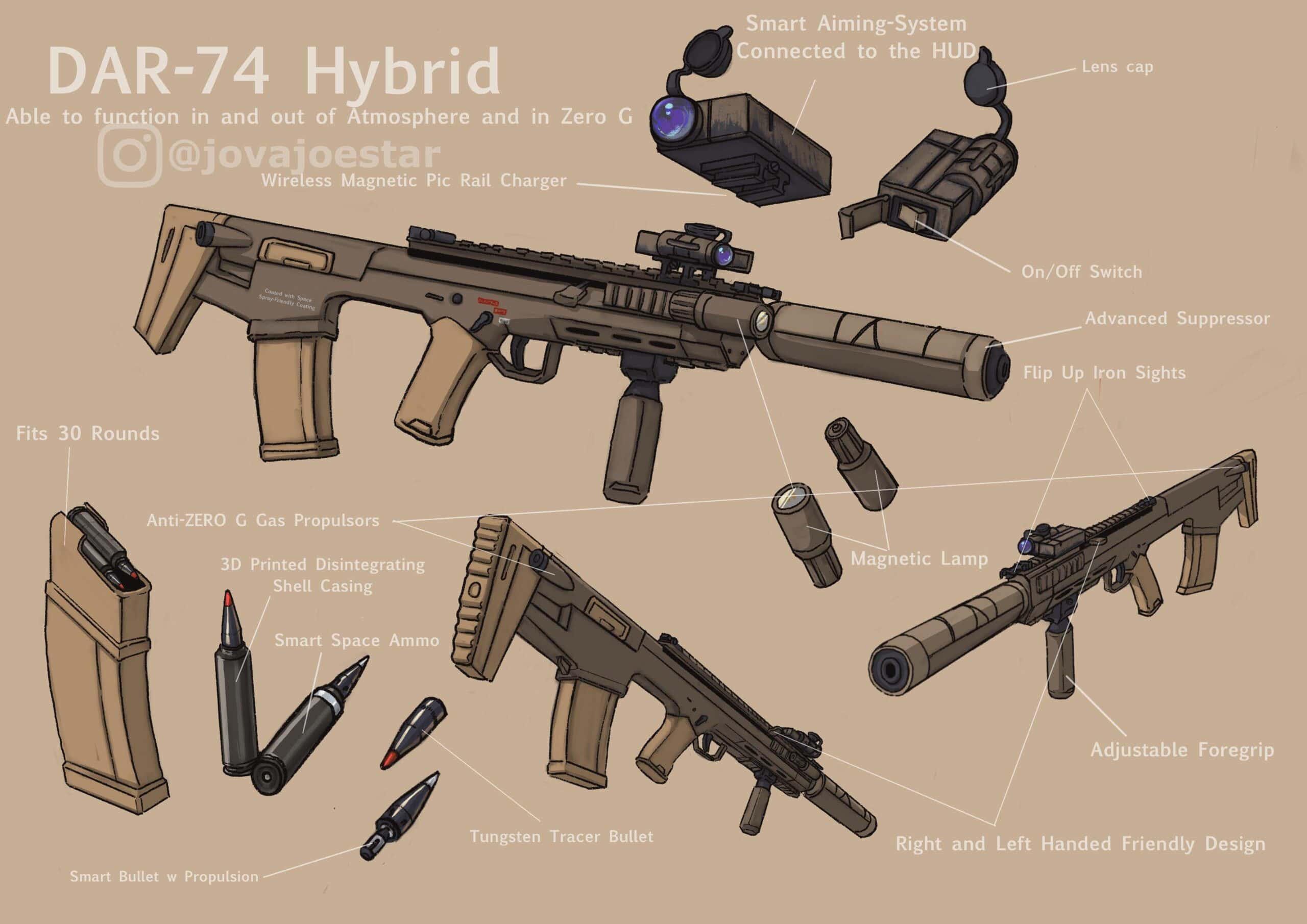The AR-15 and AR-10 differ mainly in caliber and size. The AR-15 uses .223/5.56mm, while the AR-10 uses .308/7.62mm.
The AR-15 and AR-10 are popular rifles known for their versatility and reliability. The AR-15 is lighter and uses smaller ammunition, making it suitable for various shooting activities, including home defense and sport shooting. The AR-10, on the other hand, is larger and uses heavier ammunition, making it ideal for long-range shooting and hunting larger game.
Both rifles have a similar design, but their differences in caliber and size cater to different needs. Understanding these distinctions can help you choose the right rifle for your specific requirements.
Caliber Comparison
Understanding the differences between the AR-15 and AR-10 can be crucial for firearm enthusiasts. One key difference is the caliber of ammunition each rifle uses. This section will delve into the caliber comparison of the AR-15 and AR-10, providing a clear understanding of their unique characteristics.
Ar-15 Caliber
The AR-15 typically uses the .223 Remington or 5.56 NATO caliber. These calibers are lightweight and offer low recoil, making them ideal for beginners. The smaller caliber allows for higher magazine capacity and faster shooting speed.
- .223 Remington: Common for civilian use.
- 5.56 NATO: Standard military round.
Both calibers are effective for target shooting and small game hunting. The AR-15’s lightweight rounds make it easier to handle and maneuver.
Ar-10 Caliber
The AR-10 is chambered in .308 Winchester or 7.62 NATO caliber. These rounds are larger and more powerful, offering greater stopping power. They are suitable for long-range shooting and hunting larger game.
- .308 Winchester: Popular for hunting.
- 7.62 NATO: Used by military forces.
The larger caliber of the AR-10 results in more recoil, but it also means greater impact and accuracy at long distances.
| Rifle | Caliber | Usage |
|---|---|---|
| AR-15 | .223 Remington / 5.56 NATO | Target shooting, small game hunting |
| AR-10 | .308 Winchester / 7.62 NATO | Long-range shooting, large game hunting |
Each rifle has its own strengths and best use cases based on their caliber. Understanding these differences can help you choose the right firearm for your needs.
Design And Build
The AR-15 and AR-10 are popular firearms, each with a unique design and build. Their differences in size, weight, and materials make them suitable for different uses. Let’s dive into the specifics of their design and build.
Ar-15 Design
The AR-15 is lightweight and easy to handle. It features a smaller frame compared to the AR-10. This rifle typically uses a 5.56mm or .223 caliber round. The lower receiver of the AR-15 is made from aluminum, keeping it light.
- Barrel Length: Usually ranges between 16 to 20 inches.
- Weight: Approximately 6 to 7 pounds.
- Magazine Capacity: Commonly holds 30 rounds.
The gas system in the AR-15 is designed for reliability and ease of maintenance. The handguard is often modular, allowing for a variety of attachments. The stock is usually adjustable for different shooting positions.
Ar-10 Design
The AR-10 is designed for greater power and range. It uses a larger frame to accommodate the 7.62mm or .308 caliber round. The lower receiver is also made from aluminum, but is heavier than the AR-15.
- Barrel Length: Often ranges from 18 to 24 inches.
- Weight: Generally around 8 to 9 pounds.
- Magazine Capacity: Usually holds 20 rounds.
The gas system in the AR-10 is robust, handling higher pressures. The handguard is usually larger to support heavier barrels. The stock can be fixed or adjustable, depending on the model.
| Feature | AR-15 | AR-10 |
|---|---|---|
| Caliber | 5.56mm or .223 | 7.62mm or .308 |
| Weight | 6 to 7 pounds | 8 to 9 pounds |
| Barrel Length | 16 to 20 inches | 18 to 24 inches |
| Magazine Capacity | 30 rounds | 20 rounds |
Both rifles have their own strengths. The AR-15 is ideal for close to mid-range shooting. The AR-10 excels at long-range precision.
Weight And Size
Understanding the weight and size differences between the AR-15 and AR-10 can help you choose the right rifle for your needs. Both rifles have unique characteristics that make them suitable for different applications. Let’s dive into the specifics of each.
Ar-15 Weight
The AR-15 is known for being lightweight. It typically weighs between 6 to 7.5 pounds. This makes it easy to carry for extended periods. Hunters and sport shooters often prefer the AR-15 for its light weight.
- Weight: 6 to 7.5 pounds
- Easy to carry
- Suitable for long shooting sessions
Ar-10 Weight
The AR-10, on the other hand, is heavier. It usually weighs between 8 to 10 pounds. This added weight provides greater stability. The AR-10 is often used for long-range shooting. The heavier build can handle larger calibers better.
- Weight: 8 to 10 pounds
- More stable
- Better for long-range shooting
| Rifle | Weight |
|---|---|
| AR-15 | 6 to 7.5 pounds |
| AR-10 | 8 to 10 pounds |

Credit: www.sportsmans.com
Accuracy And Range
Understanding the accuracy and range of rifles can help you choose the right weapon. The AR-15 and AR-10 are popular choices among enthusiasts. Both have unique characteristics that impact their performance. Let’s explore how these rifles differ in terms of accuracy and range.
Ar-15 Accuracy
The AR-15 is known for its precision at shorter distances. It typically uses a .223 or 5.56mm cartridge. These cartridges are lighter, which helps with stability. This allows for rapid follow-up shots with minimal recoil.
- Effective range: 300-500 yards
- Lightweight cartridges
- Low recoil
The AR-15’s design enhances its accuracy. The rifle’s barrel length and twist rate play significant roles. A longer barrel usually means better accuracy. Twist rate impacts how the bullet spins and stabilizes. The standard twist rate for AR-15 is 1:7 or 1:9.
| Feature | AR-15 |
|---|---|
| Cartridge Type | .223 or 5.56mm |
| Effective Range | 300-500 yards |
| Recoil | Low |
Ar-10 Accuracy
The AR-10 offers greater accuracy at longer distances. It commonly uses the 7.62mm or .308 cartridge. These heavier cartridges provide more stopping power. They also maintain velocity over longer ranges.
- Effective range: 600-800 yards
- Heavier cartridges
- Higher recoil
The AR-10’s design also contributes to its accuracy. It often features a longer barrel compared to the AR-15. The twist rate for AR-10 barrels is typically 1:10. This rate helps stabilize heavier bullets, improving long-range accuracy.
| Feature | AR-10 |
|---|---|
| Cartridge Type | 7.62mm or .308 |
| Effective Range | 600-800 yards |
| Recoil | Higher |
Recoil And Handling
Understanding the difference in recoil and handling between the AR-15 and AR-10 is crucial. This helps to choose the right rifle for your needs. Recoil affects your shooting comfort and accuracy. Let’s dive into the details of each rifle.
Ar-15 Recoil
The AR-15 is known for its low recoil. It uses a smaller .223/5.56 caliber round. This makes it easier to control. Low recoil means quicker follow-up shots. Beginners find the AR-15 easier to handle.
Here are some key points about the AR-15 recoil:
- Low recoil makes it user-friendly.
- Suitable for rapid shooting.
- Ideal for beginners and smaller shooters.
Ar-10 Recoil
The AR-10 has a heavier recoil. It uses a larger .308 caliber round. This makes it harder to control. Heavier recoil means slower follow-up shots. Experienced shooters prefer the AR-10 for its power.
Here are some key points about the AR-10 recoil:
- Heavier recoil requires more control.
- Suitable for long-distance shooting.
- Preferred by experienced shooters.
| Rifle | Caliber | Recoil | Ideal For |
|---|---|---|---|
| AR-15 | .223/5.56 | Low | Beginners |
| AR-10 | .308 | Heavy | Experienced Shooters |

Credit: www.youtube.com
Customization Options
Customization is a key factor for many firearm enthusiasts. Both the AR-15 and AR-10 offer a wide range of customization options. This section explores the specific customization capabilities of each rifle type. Let’s dive into the unique customization features of the AR-15 and AR-10.
Ar-15 Customization
The AR-15 is known for its extensive customization options. Many parts can be easily swapped out or upgraded.
- Barrels: You can choose different barrel lengths and materials.
- Handguards: Options include M-LOK, KeyMod, and Picatinny rails.
- Stocks: Fixed, adjustable, and folding stocks are available.
- Triggers: Many types of triggers offer varying pull weights and styles.
- Optics: Red dots, scopes, and iron sights enhance accuracy.
- Grips: Ergonomic grips improve handling and comfort.
| Component | Customization Options |
|---|---|
| Barrels | Lengths, materials, twist rates |
| Handguards | M-LOK, KeyMod, Picatinny |
| Stocks | Fixed, adjustable, folding |
| Triggers | Pull weights, styles |
| Optics | Red dots, scopes, iron sights |
| Grips | Ergonomic, tactical |
Ar-10 Customization
The AR-10 offers robust customization options, especially for those who want more power.
- Barrels: Heavier barrels improve accuracy and durability.
- Handguards: Choose from free-floating or drop-in handguards.
- Stocks: Options include precision and tactical stocks.
- Triggers: Enhanced triggers offer better control.
- Optics: Long-range scopes and night vision options are popular.
- Muzzle Devices: Flash suppressors and compensators reduce recoil.
| Component | Customization Options |
|---|---|
| Barrels | Heavier, longer, materials |
| Handguards | Free-floating, drop-in |
| Stocks | Precision, tactical |
| Triggers | Enhanced, adjustable |
| Optics | Long-range, night vision |
| Muzzle Devices | Flash suppressors, compensators |
Use Cases
Understanding the use cases of the AR-15 and AR-10 can help you choose the right rifle for your needs. Both rifles have distinct features that make them suitable for different applications. Let’s explore these use cases in detail.
Ar-15 Applications
The AR-15 is a versatile and popular rifle. It is often used for the following applications:
- Home Defense: Lightweight and easy to maneuver, making it ideal for home defense.
- Recreational Shooting: Great for target practice due to its low recoil and high accuracy.
- Hunting Small Game: Suitable for hunting small to medium-sized game like deer.
- Competitive Shooting: Commonly used in shooting sports and competitions for its precision.
These features make the AR-15 a popular choice for many gun enthusiasts.
Ar-10 Applications
The AR-10 is a powerful rifle with a larger caliber. It is often used for the following applications:
- Long-Range Shooting: Excellent for long-distance targets due to its high-power rounds.
- Hunting Large Game: Effective for hunting large animals like elk and bear.
- Military and Law Enforcement: Used for tactical operations requiring more stopping power.
- Precision Shooting: Preferred for precision shooting due to its accuracy at long ranges.
The AR-10’s features make it suitable for more specialized applications that require greater power and range.
Credit: www.quora.com
Cost And Availability
Understanding the cost and availability of AR-15 and AR-10 rifles is crucial. Both rifles have unique features. Their prices and availability vary significantly.
Ar-15 Cost
The AR-15 is generally more affordable. Most AR-15 rifles range from $500 to $1,500. The price depends on brand, features, and materials used. Basic models start at around $500. High-end models with advanced features can reach up to $2,000.
Here’s a breakdown of AR-15 cost by features:
- Basic Models: $500 – $800
- Mid-Range Models: $800 – $1,200
- High-End Models: $1,200 – $2,000
Parts and accessories for AR-15s are widely available. This makes customization affordable and easy.
Ar-10 Cost
The AR-10 is generally more expensive. Most AR-10 rifles range from $1,200 to $3,000. The price depends on the manufacturer and specific features. Basic models start at around $1,200. High-end models with premium features can reach up to $4,000.
Here’s a breakdown of AR-10 cost by features:
- Basic Models: $1,200 – $1,800
- Mid-Range Models: $1,800 – $2,500
- High-End Models: $2,500 – $4,000
Parts and accessories for AR-10s are less common. This can make customization more expensive and challenging.
In summary, the AR-15 is more budget-friendly and widely available. The AR-10, while more expensive, offers powerful performance. Choose based on your budget and needs.
Frequently Asked Questions
What Are The Main Differences Between Ar-15 And Ar-10?
The main differences are caliber size and intended use. AR-15s usually use. 223/5. 56mm rounds, while AR-10s use 7. 62/. 308 rounds. AR-10s are generally heavier and offer more stopping power, making them suitable for long-range shooting.
Which Is More Powerful, Ar-15 Or Ar-10?
The AR-10 is more powerful due to its larger caliber rounds. It uses 7. 62/. 308 rounds, which offer greater stopping power and effective range compared to the AR-15’s. 223/5. 56mm rounds.
Are Ar-15 And Ar-10 Parts Interchangeable?
Some parts are interchangeable, but not all. Lower receivers, upper receivers, and magazines are specific to each model. However, accessories like stocks and handguards may be compatible between both models.
What Are Ar-15 And Ar-10 Used For?
AR-15s are popular for home defense, sport shooting, and varmint hunting. AR-10s are favored for long-range shooting, big game hunting, and tactical applications requiring more stopping power.
Conclusion
Understanding the key differences between an AR-15 and an AR-10 can guide your firearm choice. The AR-15 is lighter and more versatile, while the AR-10 offers greater power and range. Choose based on your specific needs and preferences. Both have unique advantages, making them popular in different scenarios.


